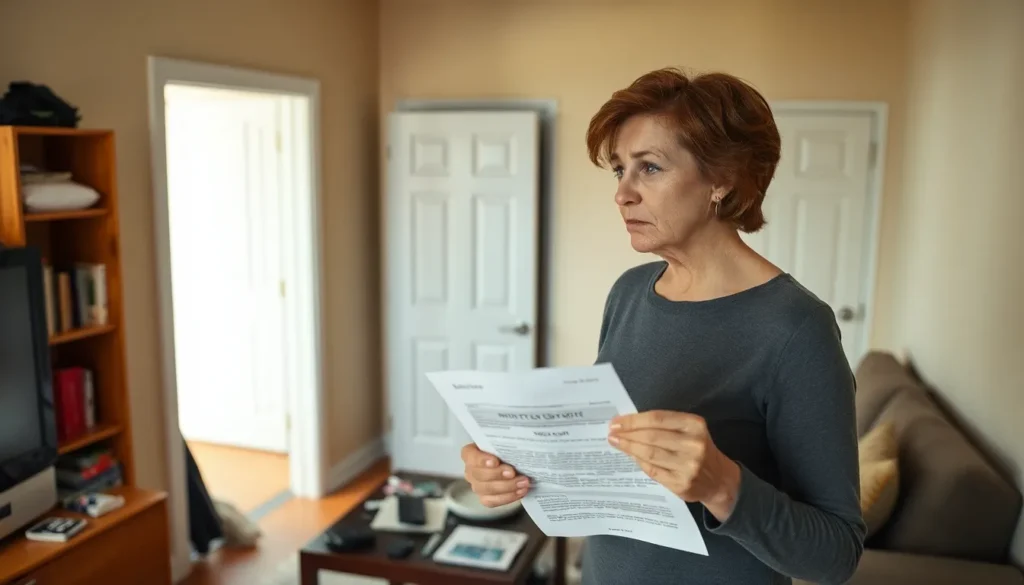Table of Contents
ToggleIn an age where secrets are harder to keep than a cat in a dog park, real estate ownership transparency is becoming the hottest topic on the block. Gone are the days when shady deals and hidden owners ruled the real estate game. Today, buyers and investors want to know: who’s really behind that shiny property? It’s not just about curb appeal anymore; it’s about who’s lurking behind the curtains.
With transparency, everyone wins. Buyers get peace of mind, sellers build trust, and the market thrives on clarity. Imagine a world where you can confidently say, “I know exactly who owns that prime piece of real estate!” It’s time to pull back the curtain and shine a light on ownership. After all, when it comes to real estate, knowledge is not just power—it’s the key to unlocking a better, more trustworthy market.
Overview of Real Estate Ownership Transparency
Real estate ownership transparency plays a crucial role in the modern property market. Increased access to ownership information builds trust among buyers and investors. The trend reflects a shift towards accountability, where stakeholders prefer transparency over anonymity. Enhanced transparency helps prevent fraud, as clearer ownership records reduce risks for potential investors.
Buyers often seek reassurance about property ownership before making significant investments. Knowledge of who owns a property enables them to make informed decisions. They appreciate transparency, as it fosters ethical practices in real estate transactions. This clarity not only benefits buyers and sellers but also strengthens market integrity.
Investors are more likely to engage in transactions when ownership information is accessible. Regulatory bodies push for reforms that promote transparency and discourage secretive deals. Policies that require disclosure of beneficial ownership demonstrate a commitment to a more open real estate environment.
As awareness grows, more jurisdictions implement measures to enhance public access to ownership data. These changes contribute to a more trustworthy real estate market. Communities gain confidence as transparency reduces corruption and illegal practices. Buyers and sellers can negotiate with greater assurance knowing who they are dealing with.
Real estate ownership transparency enriches market conditions. Greater clarity enhances buyer confidence, promotes ethical practices, and strengthens overall market integrity.
Importance of Real Estate Ownership Transparency
Real estate ownership transparency plays an essential role in creating a trustworthy environment for all stakeholders involved. Buyers and sellers benefit significantly from clear ownership information.
Benefits for Buyers and Sellers
Clarity in property ownership allows buyers to make informed decisions. Sellers gain credibility when ownership details are transparent, attracting more interested parties. Trust flourishes when potential buyers know who they are dealing with. Increased transparency reduces the chances of disputes during transactions, streamlining the buying and selling process. Access to ownership information helps prevent fraudulent activities and assures buyers of legitimate transactions. This reassurance not only fosters confidence but also enhances the overall experience for both parties.
Impacts on Market Integrity
Enhanced transparency strengthens market integrity, fostering a healthier real estate environment. Stakeholders have more faith in transactions when ownership details are open to public scrutiny. Regulatory reforms push for ownership disclosure, promoting ethical practices within the market. As jurisdictions implement measures to allow public access to ownership data, corruption risks diminish. Market participants tend to act more responsibly when they understand the potential consequences of obscure dealings. Buyers and investors gravitate towards transparent markets, ultimately leading to a more stable, trustworthy real estate landscape.
Current State of Real Estate Ownership Transparency
The current landscape of real estate ownership transparency varies significantly across different regions, reflecting diverse regulatory approaches and cultural attitudes. In some areas, robust systems exist, allowing public access to ownership information. For example, countries like Canada and the UK have made strides in establishing registries that publicly disclose property ownership. Meanwhile, regions in the United States maintain fragmented systems, wherein transparency can fluctuate widely, often depending on state laws. Challenges arise in areas lacking comprehensive regulations, which can lead to opacities in ownership that affect market integrity.
Variability Across Regions
Variability in transparency stems from distinct regulatory frameworks and cultural practices. Certain jurisdictions adopt proactive measures to enhance ownership disclosure, while others adhere to traditional privacy standards. In jurisdictions with stringent transparency laws, property registries provide clear ownership details, bolstering buyer confidence. Conversely, areas with lax regulations may see increased risks of fraud and obscured ownership, which complicates real estate transactions. Notably, emerging markets often grapple with building transparency, focusing on legislative reforms to improve trustworthiness. Stakeholders in these markets push for greater access, recognizing the benefits of enhanced ownership visibility.
Key Legislation and Policies
Key legislation and policies play a crucial role in shaping the current state of real estate ownership transparency. In many regions, laws mandate disclosure of ownership information to combat money laundering and promote accountability. The Anti-Money Laundering Act in the United States requires certain entities to report beneficial ownership, addressing transparency gaps. Internationally, organizations such as the Financial Action Task Force advocate for measures that ensure ownership clarity. However, the effectiveness of these laws varies, sometimes hampered by enforcement challenges. Legislative efforts continue to evolve, with numerous jurisdictions pushing for reforms to enhance public access to ownership data, fostering a more transparent market.
Challenges to Real Estate Ownership Transparency
Real estate ownership transparency encounters several challenges. These issues require careful navigation to maximize transparency benefits.
Issues with Privacy and Data Protection
Privacy concerns pose significant challenges to transparency in real estate ownership. Balancing the need for public information with individual privacy rights proves complex. Many jurisdictions enforce strict data protection laws that limit access to ownership details. Such regulations often aim to safeguard personal information from misuse, creating tension with transparency initiatives. Stakeholders may find that protecting sensitive data often leads to opacity in ownership records. High-profile cases of data breaches emphasize the need for secure systems for ownership disclosures. Consequently, determining an effective approach to transparency while ensuring privacy remains a contentious issue.
Barriers to Implementation
Implementing ownership transparency faces various barriers. The lack of standardized regulations across regions complicates efforts for consistent enforcement. Existing bureaucratic processes may hinder the establishment of effective data-sharing frameworks. Financial constraints often limit smaller jurisdictions from investing in necessary technologies. Additionally, resistance from stakeholders accustomed to opaque practices can slow progress. Some property owners may fear that transparency could lead to targeted solicitations or security risks. As a result, overcoming these barriers requires collaboration among government entities, industry leaders, and advocates for transparency. Progress will depend on fostering a shared understanding of the benefits associated with ownership visibility.
Case Studies in Real Estate Ownership Transparency
Real estate ownership transparency has proven beneficial through various case studies. These examples illustrate how increased clarity fosters trust and enhances market integrity.
Successful Examples
Canada stands out with its land registry system, providing comprehensive access to property ownership data. This system empowers buyers to verify ownership details easily. The UK also leads with legislation requiring beneficial ownership information to be publicly available. This initiative has encouraged responsible investment practices and discourages fraudulent transactions. Meanwhile, jurisdictions like New York City have implemented the Tenant Safe Harbor Act, promoting transparency by ensuring landlords disclose ownership information. These successful examples highlight the positive impact transparency has on market confidence and integrity.
Lessons Learned
Experiences from around the globe reveal several key insights into enhancing ownership transparency. Prioritizing accessible data has proven essential for building trust among stakeholders. Streamlining disclosure processes encourages prompt and efficient access to information. Resistance from certain stakeholders often delays progress, emphasizing the need for ongoing dialogue about transparency benefits. Clear frameworks serve as guides for other regions looking to adopt similar practices. Collaboration among government entities, regulatory bodies, and real estate professionals ultimately leads to more effective transparency initiatives.
Real estate ownership transparency is more than just a trend; it’s a fundamental shift towards a more ethical and trustworthy market. As stakeholders demand clearer ownership information, the benefits become evident. Buyers gain confidence in their transactions while sellers enhance their credibility.
The push for transparency not only combats fraud but also promotes a healthier real estate environment. By fostering collaboration among regulators and industry leaders, the goal of accessible ownership data becomes achievable. As jurisdictions refine their approaches to ownership disclosure, the market can expect to see increased stability and trust. Embracing this transparency ultimately leads to a more informed and secure real estate landscape for everyone involved.







